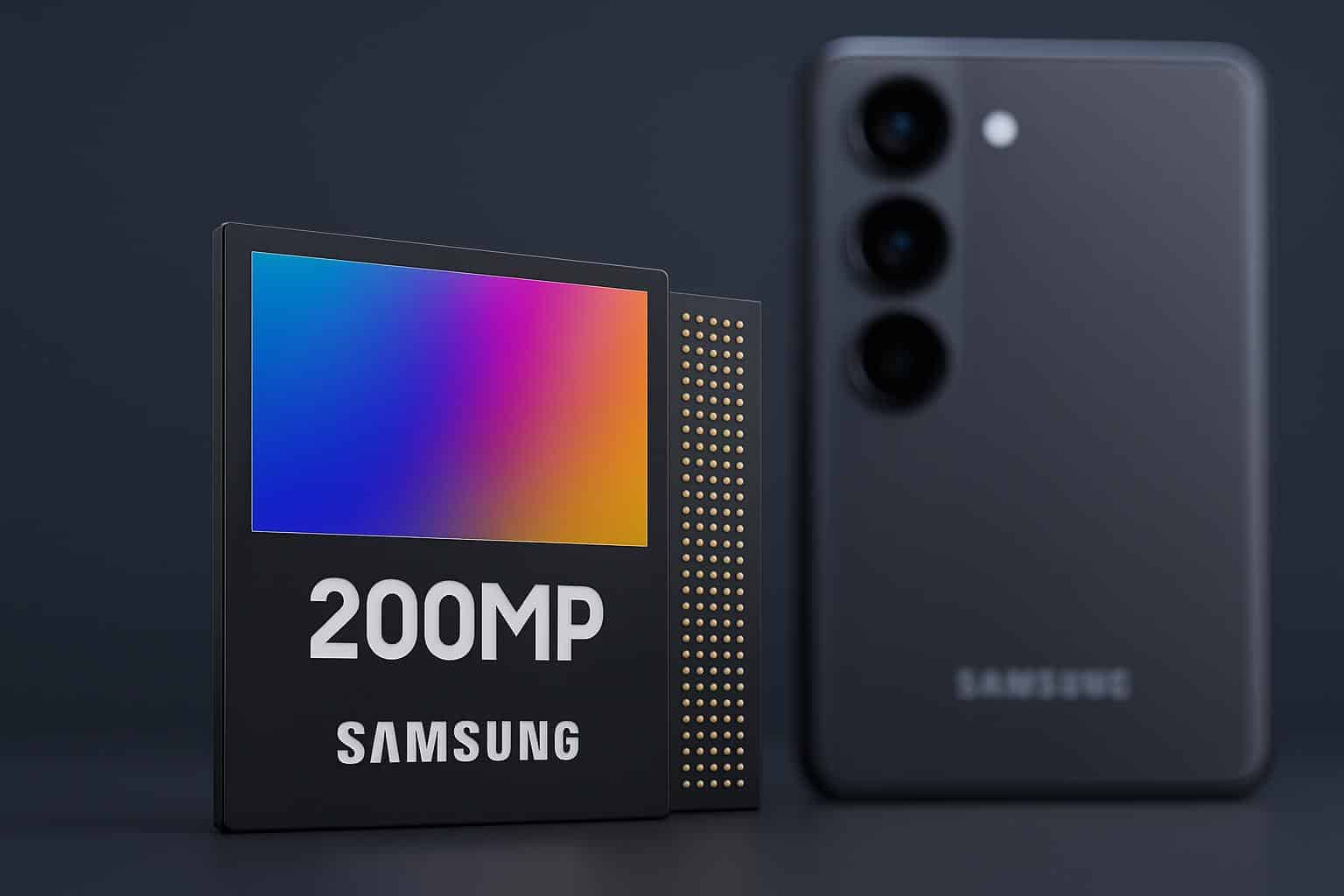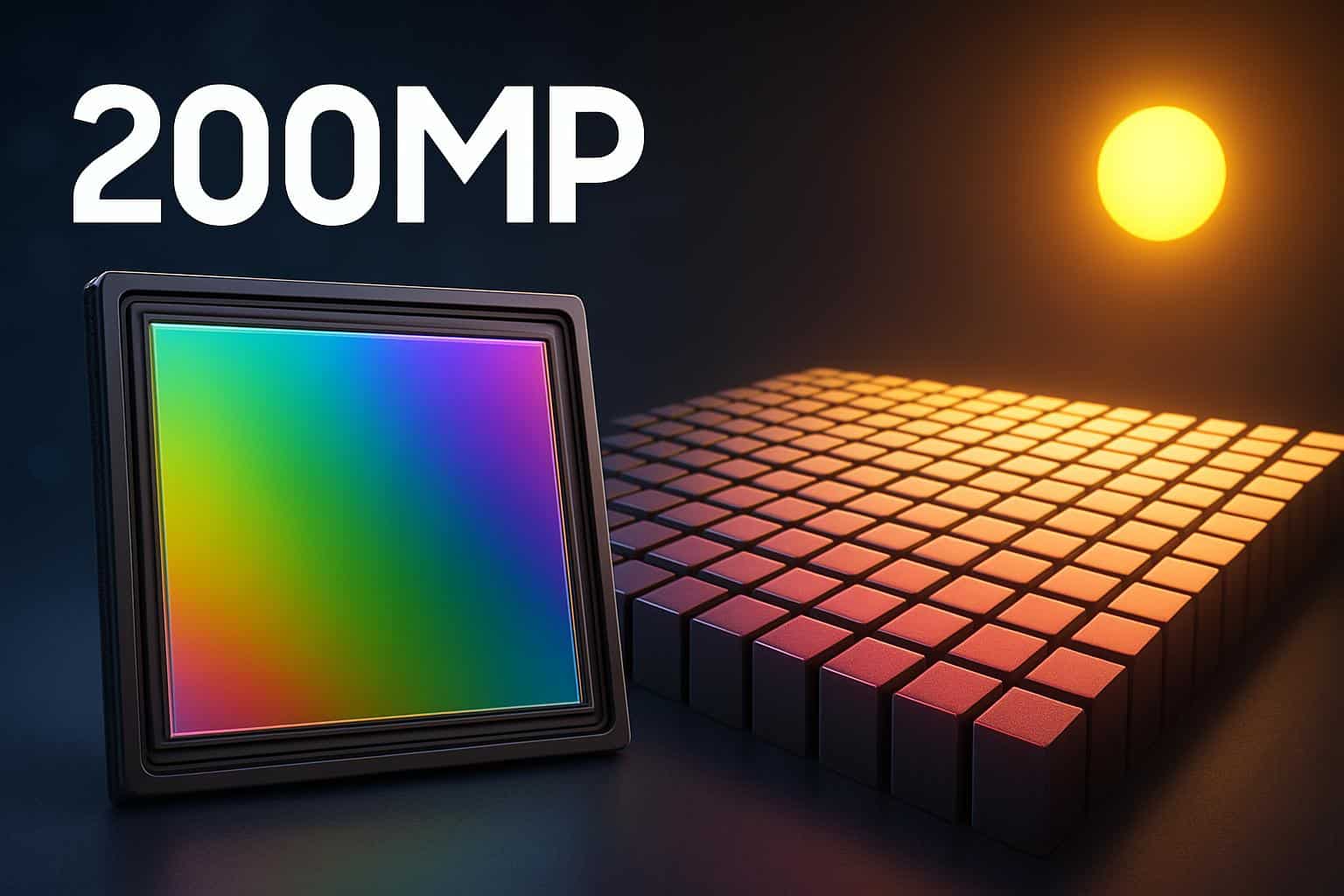Samsung Semiconductor is hyping its new ISOCELL HP5, a 200MP smartphone camera sensor that it says has the world’s smallest 0.5μm pixels. It’s a bold pitch, and also a reminder of the unyielding physics that determine image quality. Smaller pixels enable slimmer camera modules, but they also risk depriving the sensor of light — the one thing every camera requires.
What Samsung Is Really Shipping with the ISOCELL HP5
The ISOCELL HP5 is based on a 1/1.56-inch optical format with 0.5μm pixels and has a native resolution of 200MP.
- What Samsung Is Really Shipping with the ISOCELL HP5
- The Big Weakness: Tiny Pixels Limit Low-Light Imaging
- What the Mitigations Actually Do to Boost Image Quality
- Why Phone Makers Might Still Want It Despite Trade-offs
- First Movers and the Broader Market Context for HP5
- Bottom Line: Engineering Feats Versus Pixel Physics Limits

Samsung touts a host of light-management features: Front Deep Trench Isolation and Dual Vertical Transfer Gate to reduce crosstalk and increase conversion efficiency, as well as a DTI Center Cut method that the company claims raises conversion gain by 150% while reducing random noise by up to 40%.
On the feature sheet, too, it really isn’t a collection of carrots: you also have Super QPD autofocus, staggered HDR, Smart-ISO Pro (for mixed-gain exposures) and 14-bit RAW. Video specs top out at 8K up to 30 fps, 4K at up to 120 fps and 1080p at up to an impressive (and incredibly slow) 480 fps (though with some autofocus restrictions when recording at the highest frame rates). Samsung says that full-resolution 200MP images are processed in about 2 seconds, which implies a fast-readout path and aggressive ISP optimization.
In-sensor zoom is obviously one of the big stories here in a 200MP module. Samsung claims clean 2x crops when used as the main camera, and an effective zoom of up to 6x when the HP5 resides behind a 3x telephoto lens — using oversampling in well-lit conditions to mitigate detail loss.
The Big Weakness: Tiny Pixels Limit Low-Light Imaging
Smaller pixels capture fewer photons. That inflates noise, limits dynamic range and requires heavier denoising or multi-frame stacking when the light is dim. Binning helps — adjacent pixels are combined to act like a single larger one — but there is only so far it will take you. Under 4×4 binning, 12.5MP effective resolution and all-area mode is possible under a 0.5μm pitch condition, resulting in a 2.0μm pixel-equivalent output image. That’s lower than the binned pixels used in Samsung’s HP2 (0.6μm native), which measure around 2.4μm at 12.5MP levels.
Sensor area matters, too. The 1/1.56-inch format on the HP5 does stand out as considerably smaller than the 1/1.3-inch class sensors seen in some of today’s flagship sub cameras. This, all else equal, is less total light for the same exposure. Imaging researchers and labs like DXOMARK, and publications that cover work in IEEE and IEDM, have consistently highlighted the fact that while processing can help to reduce noise, processing cannot summon photons from thin air, never having entered the photodiode.
What the Mitigations Actually Do to Boost Image Quality
Isolation techniques: Samsung’s isolation techniques — FDTI, D-VTG and DCC — are meant to prevent electron leak, increase full-well capacity, and enhance SNR in low light. High-transmittance anti-reflective coatings, improved microlenses, and high-sensitivity DTI further minimize reflections and light loss at each pixel. This is significant progression and indicative of the company’s process technology, which has been covered in Samsung Semiconductor briefings and technical notes.

These developments and refinements achieve increased efficiency and reduced read noise, but do not completely compensate for the photon shot-noise penalty imposed by small pixels. In dark parts of the scene, the HP5 will rely on heavy binning, multi-frame stacking and sharpening to challenge larger-pixel competitors. Daytime detail will be strong, and HDR punchy enough, though the low-light experience is heavily dependent on the lens’ aperture alongside ISP tuning and a solid computational photography stack.
Why Phone Makers Might Still Want It Despite Trade-offs
Space is your phone’s most valuable asset in 2021. A 1/1.56-inch, 200MP sensor allows for thinner camera modules and increased design flexibility, especially in the telephoto lens space. With a 3x lens, the HP5’s in-sensor crop of 6x can give you sharp reach (they’re sharpening up the optical pathware to some extent) without needing another periscope — this is also compatible with how such compact folded optics systems have been shown off for years by Samsung with ALoP-style modules at industry events.
There is also a marketing dividend. A 200MP badge still makes for a good headline, and in bright light the raw sampling density is there to deliver detailed crops and low-artifact video. For brands that need to juggle cost, thickness and the number of cameras in their phones, the HP5’s combination of resolution, speed and module size may make pragmatic sense.
First Movers and the Broader Market Context for HP5
Samsung is the leading supplier of 200MP sensors in shipping phones, powering devices from vivo, HONOR, Xiaomi, and Samsung. It seems the HP5 is aimed at the thinner flagship and performance mid-range devices. Realme itself has already unequivocally confirmed the use of a 200MP 1/1.56-inch telephoto module in the GT8 Pro, a description that aligns with that of the HP5, while industry scuttlebutt also indicates the same usage on an imminent OPPO flagship.
Rivals are taking different paths. Sony’s latest flagship modules are all about the bigger pixels, lower resolution — such as 50MP 1-inch-class sensors that do very nicely in low-light. It’s worth mentioning that OmniVision has announced high-res options of its own, yet we have not seen them gain traction on flagships. The result is a divided market: ultra-high pixel counts for flexibility and zoom, and large sensors with big pixels for purist image quality.
Bottom Line: Engineering Feats Versus Pixel Physics Limits
Samsung is absolutely right to be trumpeting the engineering of the ISOCELL HP5, but its biggest talking point — those minuscule 0.5μm pixels — is also this sensor’s greatest weakness.
Expect superb daylight detail, snappy processing and in-sensor zoom that’s only marginally less versatile. In low light, physics will bear down on it and larger-pixel rivals will maintain an advantage. It will depend on lens quality and how each phone maker has massaged the computational tuning inside, but how well the HP5 sticks its landing is left for consumers to find out.

